| Recent Featured Videos and Articles | Eastern “Orthodoxy” Refuted | How To Avoid Sin | The Antichrist Identified! | What Fake Christians Get Wrong About Ephesians | Why So Many Can't Believe | “Magicians” Prove A Spiritual World Exists | Amazing Evidence For God | News Links |
| Vatican II “Catholic” Church Exposed | Steps To Convert | Outside The Church There Is No Salvation | E-Exchanges | The Holy Rosary | Padre Pio | Traditional Catholic Issues And Groups | Help Save Souls: Donate |  |
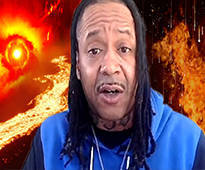
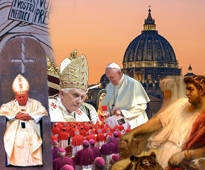
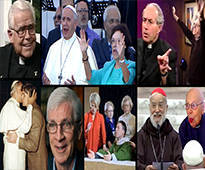
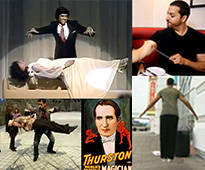
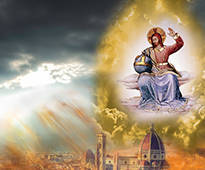

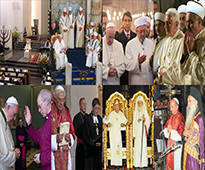


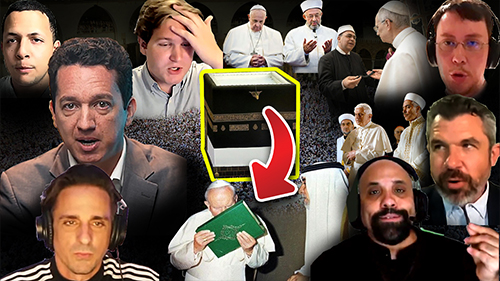 " />
" /> " />
" /> " />
" /> " />
" /> " />
" />




Greek "Orthodox" Gregory Palamas Is Not A Saint & He Was Condemned Before Vatican II
Bro. Peter Dimond
We’ve produced videos that refute Eastern ‘Orthodoxy’ and its false doctrine known as Palamism. Palamism is the heretical idea that in God there’s a real distinction between His essence and “uncreated energies.” It comes from Gregory Palamas. Palamas is considered to be a saint in various sects of Eastern “Orthodoxy”, but he is not considered to be a saint by the true Church, the Catholic Church, as we will see. He was, sadly, a heretic.
Since some people still wrongly think that Catholicism is compatible with Palamism, and even that Catholics may venerate Gregory Palamas as a saint, I want to show that the veneration of Palamas was forbidden before Vatican II. I also want to cite various pre-Vatican II theologians who recognized and denounced Palamism, just as we do, for the heresy that it is.
Fr. Joseph Pohle, who died in 1922, was a founding faculty member of the Catholic University of America and a contributor to the Catholic Encyclopedia. He wrote many things that were published with an imprimatur before Vatican II. His manual on theology was used in many seminaries. We’re not saying that Pohle was infallible or correct on everything. He was not. But he was learned and he was absolutely correct on this issue. Here’s what he says about the Eastern ‘Orthodox’ Palamites and their doctrine. He rightly calls the Palamites heretics.
This is from his work on God’s knowability, essence and attributes, which was given an imprimatur in 1910:
In yet another passage Pohle refers to:
As we can see, Pohle articulates the same position that we do: i.e. Palamism is heretical and Palamas was a heretic. Even though its adherents try to deny it, Palamism is tantamount to teaching that God is composite. That logically results in polytheism. That Palamism is tantamount to teaching that God is composite (which is heretical) is clear to anyone who is familiar with Catholic teaching on this subject, is familiar with Palamism, and is honest and faithful to the former. Anyone who tells you that Palamism is compatible with Catholicism either doesn’t know what he is talking about or he is dishonest and compromised.
Another pre-Vatican II theologian who recognized that Palamism is heresy was Fr. Martin Jugie.
Jugie was one of the most learned men of his day on matters that pertain to Eastern Orthodoxy and Palamism. He was professor of dogmatic theology at the Pontificio Instituto Orientale (the Pontifical Oriental Institute) in Rome from 1917 to 1952.
Jugie considered Palamas to be a heretical innovator.
Norman Russell, author of Gregory Palamas and The Making of Palamism in the Modern Age, called Jugie’s position on Palamas the dominant Catholic line at the time. So, the dominant Catholic position before Vatican II was that Palamism is a heretical novelty and a monstrous false doctrine.
Since Palamism is so clearly opposed to Christian truth about God, Jugie believed that a proper analysis of it was a powerful way of demonstrating that Eastern Orthodoxy is a false religion, and he was correct. People need to be converted to the one true of faith of Christ, the traditional Catholic faith, to be saved.
Jugie also notes that Palamism’s “origins are to be found in the false mysticism which began to seep into Byzantine monasticism roughly about the time when the Byzantine Church itself broke the last links which had connected it to the Roman Church...” (“The Palamite Controversy”, Dictionnaire de Théologie Catholique, translated by Peter Gilbert, Ibid.)
Gregory Palamas invented a false doctrine of God in an attempt to conform God to his false mysticism and pride.
There are some liberal heretics out there who claim that Palamas didn’t teach a real distinction in God between essence and energies but only Scotus’ formal distinction. That’s nonsense. Note: I’m not endorsing the formal distinction of Scotus. I’m merely stating that Palamas went way beyond Scotus’ formal distinction when articulating his novel position.
As Pohle, Jugie and others correctly recognized, Palamas taught a real distinction in God Himself between essence and energies, and that is tantamount to the heresy that God is composite (as we’ve shown in our other videos). Any honest person who reads The Triads or the 150 Chapters of Palamas and knows what a real distinction is will see that Palamas taught a real distinction in God between essence and energies.
In fact, on this point Professor Simeon Vailhé of Constantinople, in a 1909 article that was also published in the Catholic Encyclopedia, stated:
The same author, in the same Catholic Encyclopedia article, goes on to say:
So, this 1909 Catholic Encyclopedia article correctly identifies Palamism as heresy, a monstrous false doctrine, and one that leads to polytheism. The author also notes that the false doctrines of Palamism were officially recognized by those Eastern schismatic sects. That's another clear proof that those sects are not of the true Church.
Here’s an interesting quote from an Eastern Orthodox writer who summed up some of the pre-Vatican II opposition to Palamas.
Denis Petau, who called the teachings of Palamas “ridiculous doctrines”, is described the Catholic Encylopedia as one of the most distinguished theologians of the 17th century.
Pre-Vatican II theologian Fr. Reginald Garrigou-Lagrange also mentioned the Palamites in his commentary on the Summa Theologiae. Lagrange explicitly stated that the Palamites “denied the possibility of the beatific vision”, and he agreed with St. Thomas that such a position is “heretical”.
Concerning the dogma of divine simplicity, pre-Vatican II theologian Cardinal Johann Baptist Franzelin stated:
Palamite Eastern “Orthodoxy” fails this test.
Pre-Vatican II theologian Ludwig Ott also taught that it's heretical to maintain a real distinction between the divine essence and God's atttributes or energies. He also stated that the Sect of the Palamites held such a heretical real distinction.
Thus, Palamism is heretical according to Ott.
Pre-Vatican II theologian Fr. Joseph M. Dalmau, writing with an imprimatur in 1955, also listed the Palamites as “adversaries” of the dogma of the Beatific Vision. That of course makes them heretics according to Catholic teaching.
These condemnations of Palamism by theologians before Vatican II shouldn’t be surprising when you consider that Palamas, among his other ridiculous doctrines, taught that there are some energies that have a beginning yet are still uncreated. That is blatantly heretical; for every Christian must believe and profess that whatever begins to exist is created and that God immutable. If God begins to have new uncreated energies, then He is not absolutely immutable in His divinity. But the councils teach that God is immutable in His divinity. Read the Council of Nicea or Ephesus or Chalcedon or Athanasius and you will discover that anything that changes is created, contrary to the heretical assertion of Palamas. If you defend Palamas’ blatantly heretical teaching that some energies have a beginning yet are still uncreated, which is set forth more than once in the Triads, then you are simply a fool and a heretic.
Palamas also taught the ‘uncreated energies’ are exceeded, surpassed and transcended infinitely by the divine essence. Obviously, therefore, they cannot be the same God.
These quotes should suffice to show that people before Vatican II who were familiar with these matters and faithful to Catholic teaching at least on the doctrine of God rightly recognized that Palamism is heresy. But what about the fact that in the post-Vatican II period Palamas is venerated as a saint by certain people who claim to be Uniates (i.e. certain Eastern Rite churches that profess union with Rome). That’s a practice of the Vatican II Sect, which is not the Catholic Church, as our material covers. People need to know that Palamas was venerated by certain Eastern schismatics shortly after his death. When some of those Eastern schismatic groups converted to Catholicism, they unfortunately did not remove the veneration of the heretic Palamas from their calendars.
However, in 1720 an important provincial synod of the Uniate Church was held called the Synod of Zamość or Zamostia.
The decrees of this 1720 Council of Zamość were confirmed by Pope Benedict XIII in an apostolic consititution, as Pope Pius XII points out in his 1945 encyclical on the Ruthenians.
Well, this 1720 Uniate Synod of Zamość suppressed the veneration and even the mention of the name of Gregory Palamas. As an Eastern ‘Orthodox’ author, writing on the subject of the Ruthenian Eastern Rite in the 16th and 18th centuries, noted:
That’s what the true Catholic Church thought of Palamas: he is a heretic, not a saint. It was only in the 1970s, after Vatican II and under Antipope Paul VI, that the veneration of Gregory Palamas, which was rightly condemned by Catholics before Vatican II, was reinstated for some who use Eastern Rite liturgical books. Since the Vatican II Sect is not the Catholic Church and Paul VI was a manifestly heretical antipope, as our material proves, the reinstatement of the veneration of Palamas after Vatican II of course has no validity for true Catholics. Palamas was a heretic, as we’ve shown.
This 1720 Uniate Synod of Zamość (which condemned Palamas) was also mentioned in a positive fashion no fewer than five times by Pope Benedict XIV in his 1755 encyclical Allatae Sunt concerning the observance of the Oriental Rites.
The fact that the Vatican II Sect honors the heretic Palamas and Antipope John Paul II went out of his way to praise him as a saint is just another example of why it’s not the true Catholic Church but the prophesied end-times Counter Church, the Whore of Babylon.
What is happening in Rome now is in fulfillment of end times prophecies about the Beast and the Whore of Babylon.
We have other videos on this topic which fully refute Palamism. One of the things that we showed in a previous video is that the letters of Pope St. Agatho, which were accepted by the Third Council of Constantinople, crush Palamism. In Agatho’s letter to the emperor he teaches that whatever is stated essentially of the Trinity, such as will, operation/energy, power, glory, etc. refers to the one divine nature.
That contradicts Palamism, which asserts that the divine attributes, the uncreated energy, glory, etc., are not the divine nature.
Likewise, in the Letter of Agatho and the Roman Synod of 125 Bishops, which was also accepted by Constantinople III, it is explicitly taught that the one divine essence or nature is the divine glory, the essential will, the essential operation/energy, etc.
That totally refutes Palamism, which teaches, among other things, that the divine attributes, the uncreated glory, and the uncreated operation/energy are not the divine essence or nature.
Copyright 2020.
Sign up for our free e-mail list to see future vaticancatholic.com videos and articles.
Recent Content
^